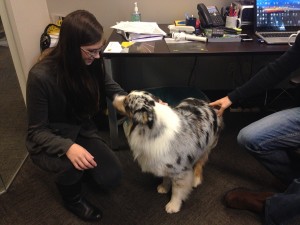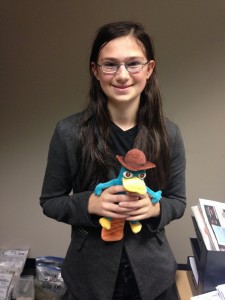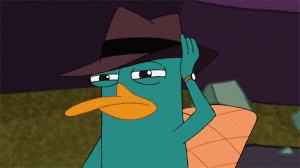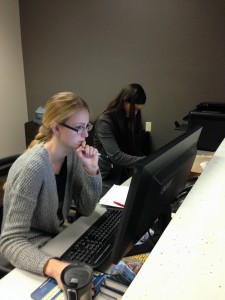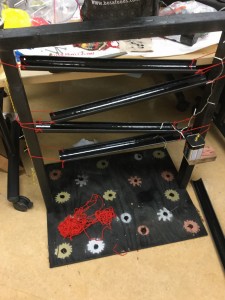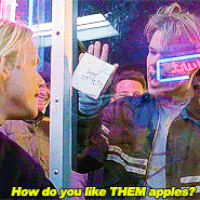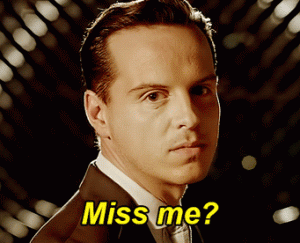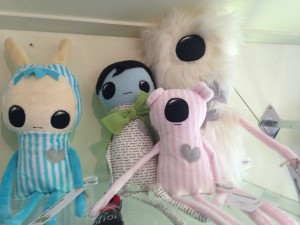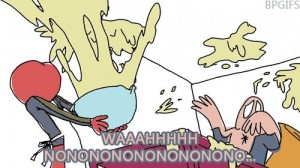Here, have some music while you listen to this post.
And if for whatever reason it fills up your whole screen… Well, I can’t really help you there just read this post first so you can understand what you’re listening to.
IMG_5519
So this is a piano cover of Resistance by Muse (here’s how it’s supposed to sound). Actually, it’s half of one as I couldn’t upload the full thing; it was too long. I apologize for the background noises, and also for any mistakes as I’m still learning how to play the piece.
In fact, my learning to play this piece is actually relevant. (Insert awesome clapping noise here). We have this project right now known as the Blue Sky Design project. Similar to the Star Wars project, this was a fairly open-ended project (although I still managed to get a couple of ideas rejected). We had to be solving a problem, doing a project on something that interested us, and designing something.
So, the problem I was working to solve was lack of motivation, and I decided to design a system to determine what form of motivation best to use in different situations. I also wanted to find out what forms of motivation worked best in different situations, as well as how you could use a few of them together. To test some different forms, I’ve been motivating myself to learn a song on the piano, which I’ve had trouble doing ever since I stopped taking lessons.
Some of the different forms of motivation I’ve tried so far have included:
• knowing that this is a project for school and I have to do it, which worked pretty well for a couple days, but eventually I became really busy and kept forgetting to practice. This was an excellent way to propel myself, and is a form of motivation to fall back on when one of my other methods isn’t going so well.
• rewarding myself immediately after I practiced I tried different kinds of rewards, from going on a walk to eating dinner, and while I found this definitely did motivate me, it didn’t motivate me to do anything really well. I found myself rushing and being careless as I mostly was just playing to get through the piece so I could get whatever my reward was. To get something done fast that doesn’t require a lot of work or thought, such as taking out the trash, I think this could work, but not so much for something that needs you to put a lot of time and effort into it.
• going back and listening to the recording of the first time I played this song and the most recent time (the time before the recording I have posted here) , which actually was surprisingly more motivating than I thought. I could really hear the difference and it made me feel like I was improving and could continue improving. As well, reviewing the recording made it easier for me to hear my mistakes so I could focus on learning certain areas. Overall, it was pretty helpful, but obviously only works when you’re partway through a project. It is important to review and edit things like essays, and seeing that you’ve done something well can be inspiring and motivating when you feel like a project is never ending.
So the recording above is my first try motivating myself with this last type of motivation, and although I did know ahead of time that I was going to be including it in my post, which gave me a second form of motivation, I think it worked pretty well.
I’ve been studying up a bit on the different forms of motivation. As far as I can tell, it can be broken down into intrinsic/internal motivation,and extrinsic/external motivation, and then into eight subgroups:
1. Emotional motivation, when you do something because you enjoy it, or out of anger or sadness or really anytime you do something driven by emotion. The connection here to my piano playing is that I enjoy playing, and I enjoy being able to play well. This can be a really powerful form of motivation, as it generally means that you actually want to be doing something, which is the best reason to do it, at least in my opinion. This is often a reason people do things like playing a game or going out with friends (happiness), writing poetry or doing other expressive arts (any emotion), or even learning a sport as an outlet for anger.
2. Incentive motivation, when you do something for a reward or positive result. The connection to my piano playing is both that I did use a reward system, and I want to do well on this project. As I mentioned before, it can result in rushed or careless work, but it really depends on the situation. This is what motivates a lot of people to do their jobs, especially jobs they don’t enjoy, and is often considered the “carrot” of the carrot/stick metaphor.
3. Achievement motivation is when you want to achieve something, as you may have figured out. The connection to my piano playing is that I would like to do well on the song, and on the project. This is also a pretty powerful form of motivation, but if you aren’t seeing a lot of results, it can get frustrating, and is a form of motivation that often makes people start things they later give up on. However, if you are dedicated enough, it can be an excellent form of motivation. This is what motivates award winning athletes to train, doctors to take many years of intense schooling, and little kids to do art.
4. Fear motivation is when you are scared of a negative consequence. The connection to my piano playing is that I don’t want to fail this project. This is the other half of the carrot/stick metaphor. It is a very powerful motivator, and can have varying degrees of results depending on the negative consequence. It can be especially powerful when it’s combined with an incentive, for instance if people do jobs they don’t like because they want money, they do them well because they don’t want to be fired.
5. Growth motivation, when you want to get better at something, be it a sport, a social interaction, or any other skill. The connection to my piano playing is that I want to improve at this song and see how I’ve grown. As I said before, seeing how much I’ve improved motivated me more than I thought, and it was really helpful, and I think it is something to do when you feel like giving up on a project. This is what motivates people to get help, or start something they want to get better at. Although it can be applied similarly to Achievement Motivation, it’s not quite the same thing.
6. Power motivation is a very interesting sort of motivation but I won’t get too far into it. Essentially, it’s when people do things to gain power, or to feel powerful. The connection to my piano playing is that I want to have the power to play a song well. I think you could do a lot with this type of motivation, in certain situations, but it has also led to negative consequences in the past. For an example of power motivation, I’d say any dictator, but actually a lot of politicians. If you don’t like politics, this is also part of what motivated Batman– he wanted the power to stop villains. That’s not really the prime example however as Bruce Wayne already had a lot of power.
7. Social motivation, when you do something to impress or please other people. This is often considered not to be as effective as the more intrinsic motivations,
as you aren’t doing something for yourself, but it can lead to people doing things like dares, and often is more effective when it’s something like trying to do what your parents want you to do.
8. Affiliation motivation is when you do something to fit in, such as conforming to a beauty standard because you think it will make you more popular, or pretending to like something because someone else likes it. I can’t say I really have a connection with this in terms of piano playing, but I have done it in the past, although I was about six years old and stopped watching Dora because “it wasn’t what the cool kids did”. After that I kind of stopped doing things to fit in because it wasn’t making me any happier.
So yeah, there will be a second part to this post at some point, but for now…
Toodles.

